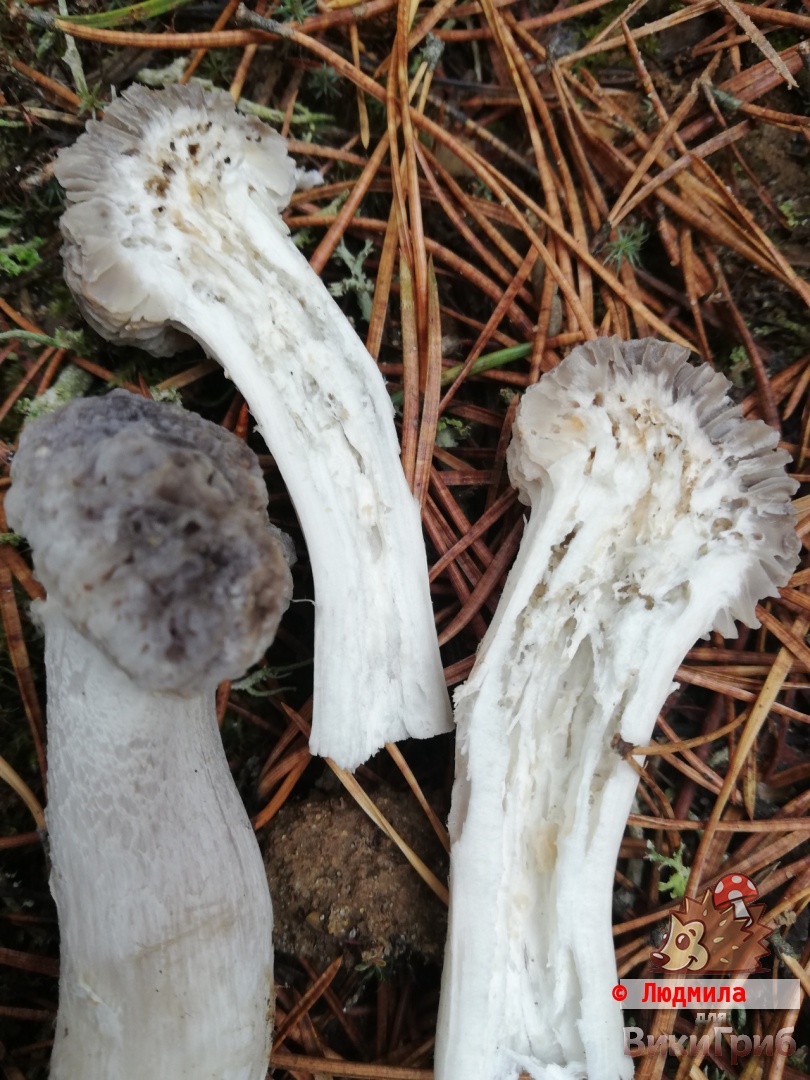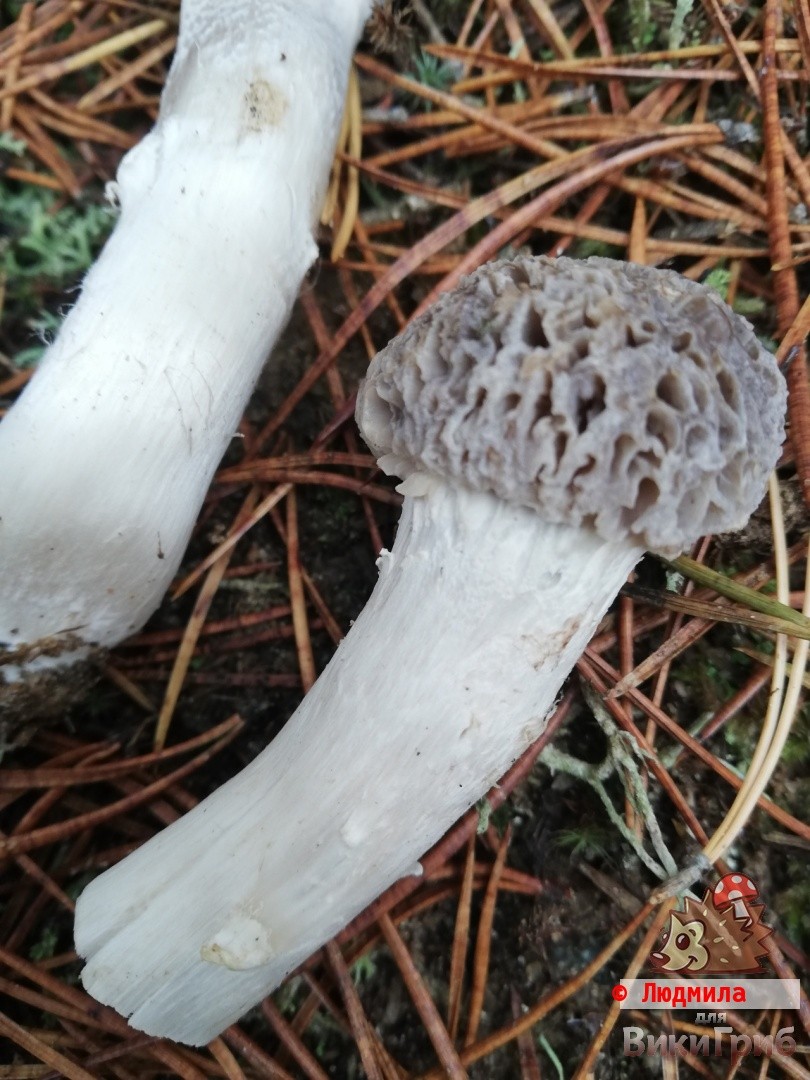មាតិកា
Spruce mokruha (Gomphidius glutinosus)
- ផ្នែក៖ Basidiomycota (Basidiomycetes)
- ផ្នែករង៖ អាហ្គារីកូម៉ីកូទីណា (Agaricomycetes)
- ថ្នាក់៖ Agaricomycetes (Agaricomycetes)
- ប្រភេទរង៖ Agaricomycetidae (Agaricomycetes)
- លំដាប់: Boletales (Boletales)
- គ្រួសារ៖ Gomphidiaceae (Gomphidiaceae ឬ Mokrukhovye)
- ពូជ : Gomphidius (Mokruha)
- ប្រភេទ: Gomphidius glutinosus (Spruce mokruha)
- Agaric slippery ស្កូប៉ូលី (១៧៧២)
- Sticky agaric Schaeffer (1774)
- Agaric ពណ៌ត្នោត Batsch (១៧៨៣)
- Agaricus limacinus Dickson (1785)
- Agaric covered Withering (1792)
- Adherent agaric JF Gmelin (១៧៩២)
- Agaric slimy ប្រជាជន
- Viscous curtain ពណ៌ប្រផេះ (1821)
- Gomphidius glutinous (Schaeffer) Fries (1836)
- Gomphus glutinous (Schaeffer) P. Kummer (1871)
- Leucogomphidius glutinosus Kotlába & Pouzar, 1972
- Gomphidius glutinous (Schaeffer) Kotlaba & Pouzar (1972)
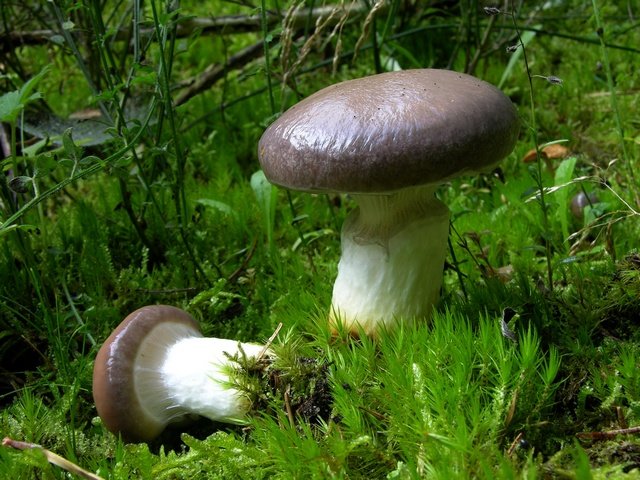
The current name is gomphidius glutinosus (Schaeffer) Kotlaba & Pouzar (1972)
The Gomphidiaceae family is represented by a single genus, Gomphidius (Mokruha). Mushrooms of this family, despite the fact that they are lamellar, according to the classification, are closely related to fungi of the family Boletaceae, which includes such genera as, for example, mossiness mushrooms, butterflies, butterflies.
The etymology of the generic name comes from γομφος (Greek) – “molar tooth, nail”, and the specific epithet from glutinosus (lat.) – “sticky, viscous, viscous”
ក្បាល 4-10 cm in diameter (sometimes grows up to 14 cm), in young mushrooms it is hemispherical, then convex, convex-prostrate with a depressed center. A small blunt tubercle may sometimes remain in the center of the cap. The edge of the cap is thick, strongly curved towards the stem, straightens as it matures, while remaining continuous, noticeably rounded. The cuticle (skin) is smooth, covered with thick mucus, shiny in dry weather when dried, easily and completely separated from the body of the cap. Grey, greyish brown with a purple tint along the edge to gray blue and chocolate brown with a purple tint, the surface of the center of the cap tends to be darker. With age, the entire surface of the spruce mokruha cap can become covered with black spots. The cap is connected to the stem with a transparent, cobwebbed, private veil; in mature mushrooms, the remnants of the veil remain along the edge of the cap for a long time.
ហីមេនភូក mushroom – lamellar. The plates are thick arcuate, descending to the stalk, very rare (8-10 pieces / cm), highly branched, 6 to 10 mm wide, in young mushrooms under a slimy coverlet of a whitish hue, after breaking the coverlet, the plates are exposed and change color with age to purple-brown, almost black, the remains of the coverlet form a slimy inexpressive ring on the leg.
ផូស massive fleshy, brittle, white with a pinkish tinge, brownish under the cuticle, becoming grayish with age. At the base of the stem is a rich chrome-yellow color. The taste is sour, in some sources – sweetish, the smell is weak, pleasant mushroom. When damaged, the color of the pulp does not change.
មីក្រូទស្សន៍
ម្សៅស្ព័រមានពណ៌ត្នោតខ្មៅស្ទើរតែខ្មៅ។
Spores 7,5-21,25 x 5,5-7 microns, spindle-elliptical, smooth, brown, yellow-brown (in Meltzer’s reagent), drop-shaped.
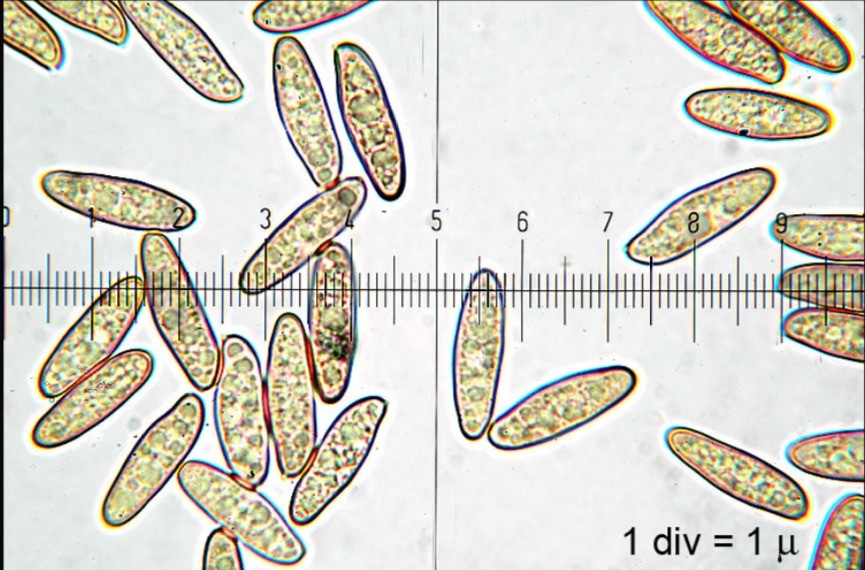
Basidia 40-50 x 8-10 µm, club-shaped, 4-spore, hyaline, without clamps.

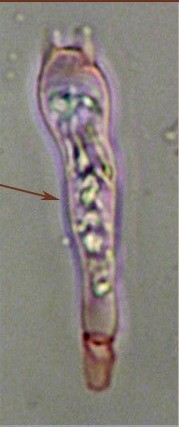
Cheilocystidia are numerous, cylindrical or slightly fusiform, 100-130 x 10-15 µm in size, some are embedded in a brown amorphous mass.
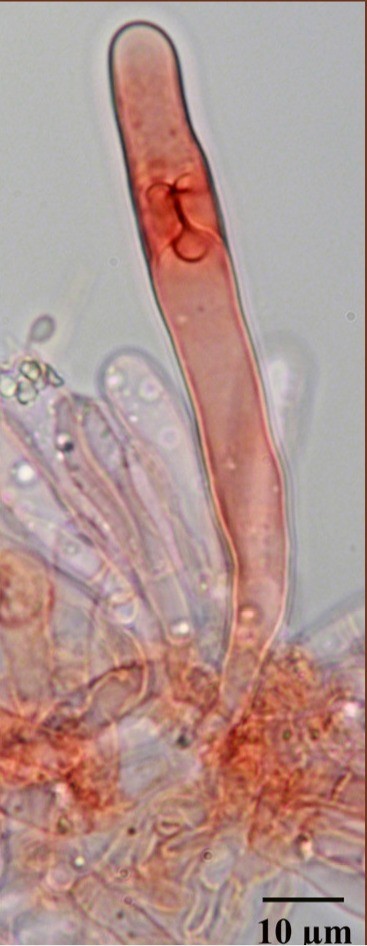
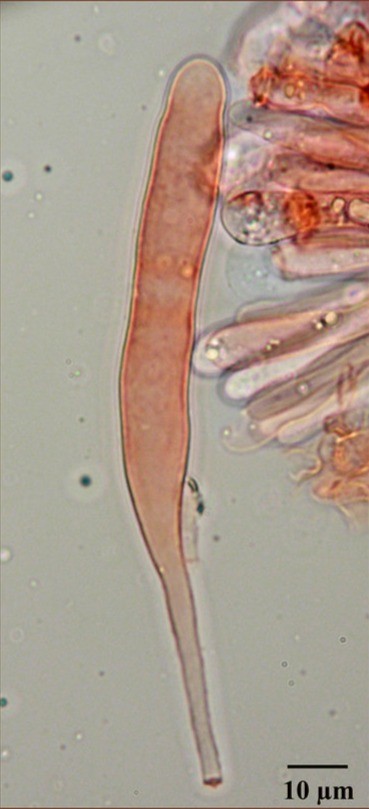
Pleurocystidia are rare.
ជើង 50-110 x 6-20 mm, high cylindrical, more swollen in the lower third, sometimes thinned at the base. white and dry above the annular zone. The slimy, inexpressive ring is located in the upper third of the stem; as the fungus matures, it turns black from spores. Under the annular zone, the stalk is mucous, sticky, at the base it is chrome-yellow both on the surface and in section. At the very bottom, the leg is blackish. In mature mushrooms, the stem turns brown.
It grows both on limestone and acidic moist soils in coniferous and mixed forests, but always under spruce, with which it forms mycorrhiza. Much less often mycorrhiza forms with pine. Grows in mosses, heather, forest floor, mostly in groups.
Mid-July until frost. Massively fructifies from August to September. It is distributed throughout the northern and temperate zones of the republics of the former USSR, in the Altai Territory, Western Europe, and North America.
An edible mushroom of the IV category, reminiscent of the taste of butter, is recommended to be peeled and boiled before use. Used to make sauces, stews. It is also popular in conservation: salting, pickling. In North America, the mushroom is cultivated.
It has no inedible and poisonous counterparts. Visually, it can sometimes be confused with butterflies, but with a cursory glance at the lamellar hymenophore of mokruha, all doubts will immediately dissipate. Looks like some of his relatives in the family.

Mokruha បានប្រទះឃើញ (Gomphidius maculatus)
it is distinguished by a hat with characteristic spots, as well as flesh reddening in the cut and olive-colored spore powder.
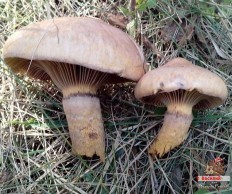
រមាសខ្មៅ (Chroogomphus rutilus)
very similar. It has a rich purple color and prefers to grow under pines.
